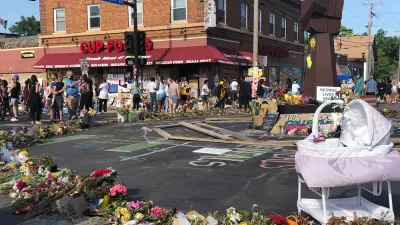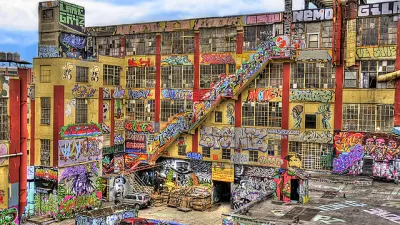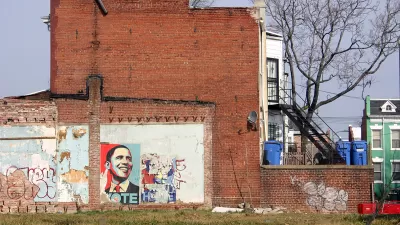Using laser technology, two artists have created a new type of "temporary graffiti" -- light shows that use public places as canvasses for their laser art.
"While most graffiti crews use spray paint to mark buildings and urban infrastructure, Roth and Powderly, the artists behind the Graffiti Research Lab, have perfected a unique form of temporary high-tech graffiti they call laser tagging that utilizes a laser pointer in lieu of paint, a projector in place of a spray. Instead of hitting dark subway tunnels and back alleys, they turn their attention to public places such as skyscrapers and monuments. A growing legion of fans turn out regularly to witness live demonstrations of their light shows (see video of their latest graffiti missions), but most log on en masse to watch videos of the events on such sites as YouTube and GraffitiResearchLab.com. A few hundred have even downloaded the needed computer code and instructions - something the "open-source" artists encourage people to do - to replicate Powderly and Roth's art in cities around the world. As a result of their soaring online popularity, the two artists have been sought out by a number of prominent curators in the art world - most recently by those at the Museum of Modern Art in New York - who see in their digital etchings a convergence of street art, graffiti art and urban cinema."
FULL STORY: Graffiti 2.0: Gone by Morning

Planetizen Federal Action Tracker
A weekly monitor of how Trump’s orders and actions are impacting planners and planning in America.

San Francisco's School District Spent $105M To Build Affordable Housing for Teachers — And That's Just the Beginning
SFUSD joins a growing list of school districts using their land holdings to address housing affordability challenges faced by their own employees.

The Tiny, Adorable $7,000 Car Turning Japan Onto EVs
The single seat Mibot charges from a regular plug as quickly as an iPad, and is about half the price of an average EV.

Seattle's Plan for Adopting Driverless Cars
Equity, safety, accessibility and affordability are front of mind as the city prepares for robotaxis and other autonomous vehicles.

As Trump Phases Out FEMA, Is It Time to Flee the Floodplains?
With less federal funding available for disaster relief efforts, the need to relocate at-risk communities is more urgent than ever.

With Protected Lanes, 460% More People Commute by Bike
For those needing more ammo, more data proving what we already knew is here.
Urban Design for Planners 1: Software Tools
This six-course series explores essential urban design concepts using open source software and equips planners with the tools they need to participate fully in the urban design process.
Planning for Universal Design
Learn the tools for implementing Universal Design in planning regulations.
Smith Gee Studio
City of Charlotte
City of Camden Redevelopment Agency
City of Astoria
Transportation Research & Education Center (TREC) at Portland State University
US High Speed Rail Association
City of Camden Redevelopment Agency
Municipality of Princeton (NJ)





























